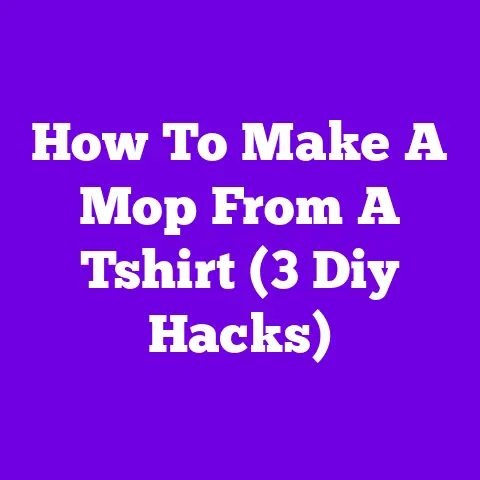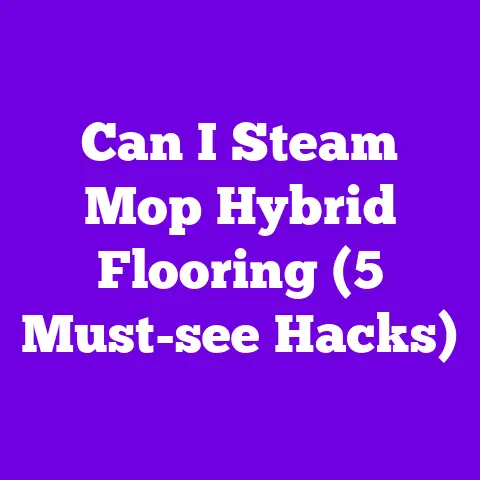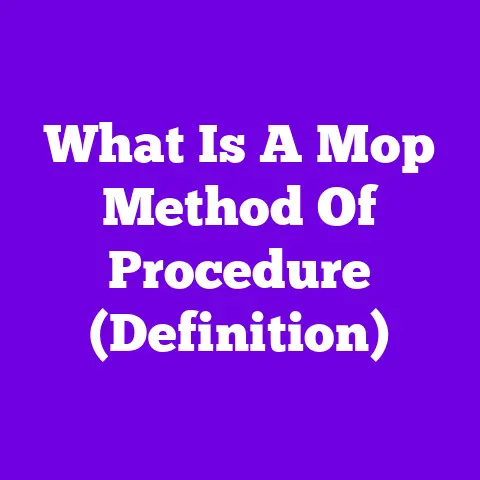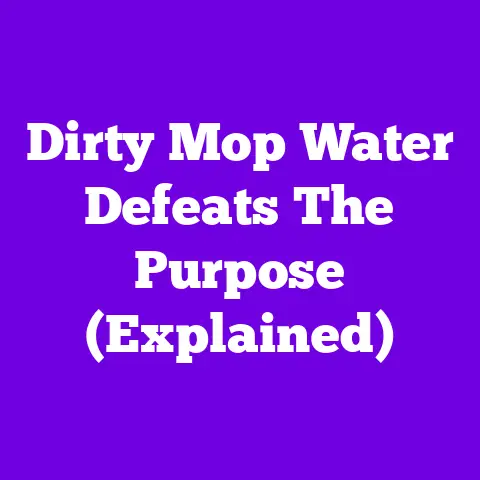Why You Should Mop In Small Sections Instead Of Wide Strokes
When it comes to keeping floors clean in your home, mopping is an essential task. However, the method you use to mop can have a significant impact on how effectively you remove dirt, bacteria, and other contaminants from floor surfaces.Mopping with wide, sweeping strokes may seem like an efficient approach. But this technique actually spreads dirty water across larger surface areas instead of lifting away messes.
Mopping in small, manageable sections helps concentrate cleaning solution and lift grime more effectively from the floor.Read on as we explore the details of proper mopping technique and why working in small sections leads to better cleanliness. With some simple adjustments to your process, you can achieve spotless hard surface floors throughout your home.
Why Mopping in Wide Strokes Spreads Dirt Around
When mopping floors, it’s tempting to make long, sweeping strokes across large areas to try finishing the task more quickly. However, this wide-stroke mopping method can actively work against your cleaning goals in several ways:
Covers More Surface Area with Dirty Water
Mopping with very wide strokes causes the strings or pad on your mop head to contact a larger section of floor. When using a single load of cleaning solution in your bucket, you spread that solution over more square footage. This dilutes the concentration of the cleaner and reduces its effectiveness lifting up soil.
Essentially, wide-stroke mopping takes your finite amount of sudsy water and diffuses it too widely to dissolve and lift away grime.
Spreads Loosened Grime and Bacteria Around
In addition to diluting cleaning power across larger areas, making wide mop strokes spreads loosened dirt, grime, bacteria, and more across your floors instead of removing them.
As your mop initially makes contact with an area of flooring, some amount of cleaning action does occur. Dirt and contaminants interact with the water and cleaning solution, loosening from the floor surface.
But instead of lifting these now-loose particles away, wide mop strokes push them across the floor’s surface. This leaves a trail of dispersed but not removed grime in the mop’s wake.
Leads to Missed Areas and Streaking Issues
Trying to cover more floor space with each sweeping mop stroke also leads to inconsistent cleaning and missed areas. It becomes nearly impossible to evenly contact the entire floor surface when hurrying across large sections.
You inevitably concentrate mop pressure on some spaces while unintentionally hopping over others. This leaves unsightly streaks, swirls, and patches of lingering dirt on the floor.
For effective cleaning, the mop pad needs even contact and pressure across every inch of flooring. Wide, rushed strokes make that consistent coverage nearly impossible.
Working in Small Sections Maximizes Cleaning Power
Now that you know why wide-stroke mopping fails to get floors clean, let’s discuss the better alternative technique: mopping in small, manageable sections.
This focused approach allows you to concentrate cleaning solution and mop contact on limited areas of flooring at a time. Working section-by-section uses your cleaning solution more effectively for better dirt and contaminant removal.
Uses Concentrated Cleaning Solution
The main advantage of mopping in small sections is concentrating your cleaning power only where it’s needed at that moment.
With this technique, you apply fresh solution from the mop bucket only to the current 3-4 foot section of floor. As you thoroughly mop just this limited area, the cleaner stays sudsy and concentrated instead of becoming watered down by wide dispersal.
Concentrated soap and water clings to the floor surface better, helping lift away stuck-on grime and dissolve sticky messes. You give each section of flooring the maximum cleaning power possible from your solution.
Lifts Grime Away Instead of Spreading It Around
In addition to concentrated cleaning action, working in sections removes the problem of spreading loosened dirt around to other areas.
As you mop, particles interact with the solution and release from the floor in just that small section. The mop then lifts that grime away immediately instead of pushing it elsewhere.
Once finished with the area, you can rinse the mop pad, wring it out, and move fresh solution to the next section. This “lift and remove” cleaning prevents redistributing filth across floors.
Allows Consistent Coverage Without Streaking
Mopping floor spaces 3-4 feet square at a time also lets you achieve even contact and pressure throughout. You have complete control over a limited zone, allowing you to thoroughly mop every inch before moving on.
With small sections, inconsistencies become immediately apparent as you work. You can spot and correct any missed patches or streaks left behind, avoiding permanent dirty swirls across your floors.
This attention to detail prevents the frustrating streaks and uneven cleaning that inevitably occur from wide, rushed mop strokes.
Step-By-Step Guide to Mopping in Sections
Now let’s discuss the actual process for mopping hard surface flooring section-by-section for superior cleanliness:
Step 1: Select Your Cleaning Solution
Choose an appropriate floor cleaner for your needs:
- For everyday cleaning, an all-purpose cleaner or soap-based solution works well for lifting dirt.
- For more heavy-duty grime, use a stronger degreaser.
- For sanitization, choose a disinfectant solution rated to kill 99% of bacteria.
Mix the cleaning product with water according to package instructions. Avoid over-diluting, which reduces effectiveness.
Step 2: Divide the Floor Into Sections
Map out logical working areas of approximately 3-4 foot square sections.Work systematically from one side or corner of the room to the other so you don’t miss any spaces or overlap cleaned areas.
Step 3: Mop One Section at a Time
Working methodically section-by-section, immerse your mop head into the cleaning solution. Lift it out allowing excess to drain off, leaving the mop damp but not dripping.
Apply the mop to the floor and mop back and forth from multiple directions to lift embedded dirt. Overlap strokes slightly to prevent streaking.
Rinse the mop pad as needed in clean water if it becomes too dirty. Wring it out well before reapplying solution.
Step 4: Rinse if Needed, Then Allow to Dry
For floors that need rinsing after mopping, clean the section again using a second rinse bucket filled with clean water.
Wring the mop head well and rinse away any clinging suds or dissolved grime.
Repeat this rinse process as you complete each section until the entire floor surface is cleaned.
Allow the floor to air dry completely before use. Place “wet floor” signs if needed.
Step 5: Re-Mop Any Missed Areas
Inspect the floor when fully dry, re-mopping any areas with lingering dirt, streaks, or inconsistencies. Touch-up these spots immediately to prevent permanent damage or staining.
The section-by-section process allows quick identification and correction of missed patches as you go.
Additional Tips for Effective Floor Mopping
Beyond the section-by-section technique, keep these extra pointers in mind for clean, streak-free floors:
- Use two buckets for cleaning and rinsing to prevent redepositing grime from dirty mop water.
- Change the rinse water frequently to lift soil effectively.
- Rinse and wring mops often for maximum dirt removal.
- Allow floors to fully dry between moppings to avoid slippery surfaces or wicking up deeper stains.
- Invest in high-quality microfiber mops and pads, which lift and absorb better than string or sponge mops.
- Use proper floor cleaners and follow dilution instructions carefully. Too little cleaner won’t dissolve grime fully while over-diluting wastes product.
- Work in the same direction as floor boards or tile grout lines to get debris out of crevices.
- Behind appliances and under movable furniture need cleaning too! Get into those forgotten areas.
- For seriously soiled floors, do an initial pre-cleaning sweep/vacuum to remove loose surface debris before mopping.
- Well-maintained floors need less rigorous mopping. Do upkeep touch ups routinely to prevent heavy buildup between deep cleanings.
- Keep kids and pets out of rooms until floors completely dry to avoid slip hazards or tracking in grime from damp floors.
Common Mopping Issues and Solutions
If you notice any of these common mopping problems after cleaning your floors, refer here for troubleshooting:
Issue: Dull, dirty film left on the floor surface after mopping.
Solution: The cleaning solution was too diluted or rinse water too dirty to lift grime effectively. Use properly diluted cleaner and change rinse water frequently.
Issue: Sticky, cloudy residue left after cleaning.
Solution: Rinse again with clean water. Avoid over-applying cleaning solution. Sticky buildup means the cleaner wasn’t fully removed.
Issue: Filmy haze or sudsy residue that reappears as floors dry.
Solution: Rinse again to remove cleaning product more thoroughly. Check dilution rates and use less product if too concentrated.
Issue: Swirls, streaks, or inconsistent dirt removal across floor area.
Solution: Improve mopping technique. Overlap strokes for even coverage. Divide floor into sections to control contact better.
Issue: Dingy grout lines or grime trapped in cracks.
Solution: Scrub problem areas with a brush or grout cleaner. Mop in direction of lines to lift debris from crevices.
Issue: Cloudy streaks or traffic lane buildup that won’t lift.
Solution: Use a stronger cleaner made to dissolve set-in grime and film. May require occasional heavy-duty cleaning.
Preventing Future Mopping Headaches
While the section-by-section technique offers effective solutions for dirty floors in the moment, prevention is also key for reducing future grime buildup and mopping headaches.Implement these proactive measures for keeping floors cleaner day-to-day:
Maintain With Quick Cleaning Routines
Don’t let dirt sit and become ground in. Quick-clean high traffic areas routinely using proper floor cleaner and a damp mop to lift away grime before it sticks.
Use Interior and Exterior Mats
Place durable, easy-to-clean mats inside and outside entryways. These can trap significant amounts of dirt and moisture from shoes to prevent it reaching your floors.
Address Spills Immediately
Don’t let puddles or spills dry on floors. Clean up messes with an appropriate cleaner and dry the area to avoid slippery spots or deeper stains over time.
Consider Low-Maintenance Flooring
Choose resilient flooring better able to resist scratches, stains, and wear for easier upkeep. New enhanced surface treatments offer improved protection too.
Remove Grit Quickly
Don’t let heavy grit and debris sit on floors that can scratch delicate surfaces when walked over. Routinely sweep, dust mop, or vacuum to lift away the worst abrasives.
Control Moisture Carefully
Let wet floors dry completely before walking on them. Check for and repair any moisture sources like leaks that allow excess water to reach floors leading to warping or discoloration issues.
Protect Floors During Remodels
Cover vulnerable flooring with protective sheets during construction or renovation work when heavy debris, tools, solvents or paint could reach them.
Frequently Asked Questions
What areas should be mopped section by section?
Any hard surface flooring like tile, vinyl, linoleum, sealed concrete, or hardwoods. Section mopping allows concentrated cleaning product contact for these floors.
How large should each section be?
For most home floor mopping, sections of 3-4 foot squares work well. This allows concentrated cleaner without over-fatiguing the body leaning and squatting repeatedly.
Can the section method be used for carpet cleaning?
No, carpets require different cleaning techniques. But the same “work in manageable areas” concept applies for best extraction by carpet cleaning machines.
How can I add cleaning solution without making a mess pouring from the bucket?
Use a squirt bottle to distribute solution to your mop head instead of fully immersing in standing water. Add more to the mop as needed section by section.
What kind of mop is best for small section cleaning?
Choose a flat mop head that makes solid, even contact with the floor. Microfiber mops lift and absorb better than string or sponge mops.
Any other equipment that helps this process?
Yes, a second rinse bucket allows dirty water separation so grime isn’t reapplied. Spin mops that centrifugally wring themselves out save effort too.
Conclusion
While wide, sweeping mop strokes may seem like the fastest way to clean floors, this technique actually leads to diluted cleaning solution, spread around grime, and inconsistent coverage.For superior floor cleaning results, concentrate your efforts by mopping in small, manageable sections instead.






